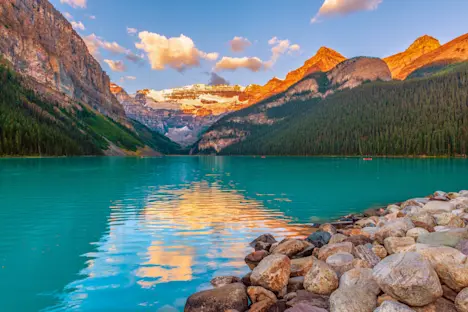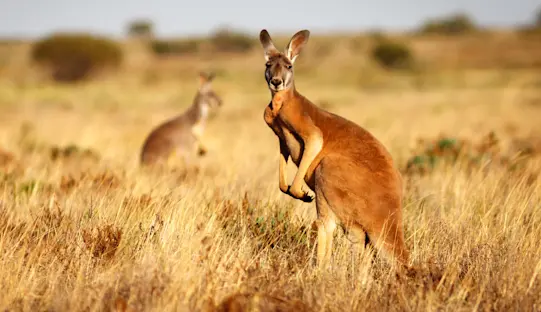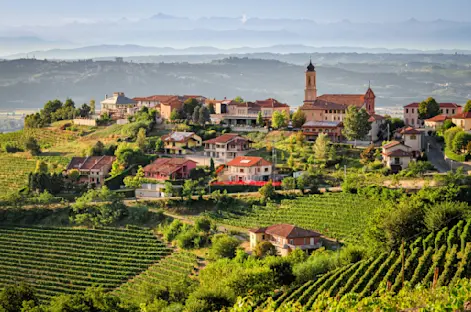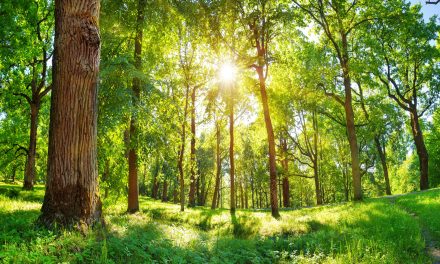Pollinators— including bees, butterflies, birds and bats—are essential for healthy ecosystems and our global food supply:
- According to WWF, almost 90% of wild plants and 75% of global crops depend on animal pollination.
- The USDA says one out of every three mouthfuls of food depends on pollinators, as do half of the world’s oils, fibers and raw materials.
Pollinators also prevent soil erosion and increase carbon sequestration. But habitat loss, pesticide use, and climate change have pushed many pollinators to the brink of species collapse. According to the Intergovernmental Science-Policy Platform on Biodiversity and Ecosystem Services (IPBES), 40% of insect pollinator species are at risk of extinction globally. Some even more so: in North America, the monarch butterfly has experienced a significant decline, with populations decreasing by more than 80% over the past three decades.

Monarch butterflies
Beyond Bees: Which Animals Pollinate?
Birds, bats, bees, butterflies, beetles, and other animals—even lemurs, possums and reptiles—pollinate plants that sustain ecosystems. Pollinators visit flowers in search of food, mates, shelter, nest-building materials, and more. The energy that powers most pollinators comes from the sugars in nectar and the proteins, fats, vitamins and minerals in pollen grains. As they move, pollinating animals transport pollen from plant to plant in interactions critical to the reproductive system of most flowering plants. It’s a partnership that most plants and pollinators require for survival.

Pallas’s Long-tongued bat
Which pollinators spend winter in the garden?
While spring and summer are typically peak pollinator seasons due to the number of blooming plants, weather conditions, animals coming out of hibernation and migration, work to support pollinators should not stop when temperatures drop. For butterfly species that do not migrate, strategies include surviving the winter in a dormant phase in cocoons, as caterpillars, and some can even survive as mature adults. Bumblebees and honeybees are two types of bees that overwinter in our gardens: Honeybees overwinter as an entire colony inside of a beehive. When the temperature drops below 50°F, honeybees stop foraging and begin to surround the queen bee in the central part of the hive. The workers protect the queen from the cold temperatures by shivering, which raises the temperature to around 80°F and then 98.6°F when the queen begins to lay eggs again. Honeybees consume their stored honey throughout the winter so they can produce the necessary amount of body heat required to maintain a constant temperature in their cluster.

For bumblebees, all of the worker bees and the old queen bee die before winter starts, leaving the young queens as the only surviving members of the colony. If the young queen bumblebees haven’t achieved a certain weight before winter, they will likely not survive, which is why it’s important for them to find many nectar-rich flowers in the fall. For native solitary bees, it is common for females to lay eggs in underground nests (mining bees, sweat bees, polyester bees) or in sealed and insulated cavities aboveground (leafcutting bees, mason bees). These eggs then hatch and survive the winter as dormant adults waiting to emerge in the spring or as developing pupae kept safe and warm inside nests. Once the weather is warm enough, emerged females will find their own independent nesting sites and lay the next generation of eggs. Some hummingbirds that live in warmer areas like California do not migrate.

Different species of butterflies hibernate at different stages of their life cycles; the caterpillar stage is when most butterflies overwinter. Many of these hibernating caterpillars individually attach themselves to leaves or tree branches and wrap themselves in a tube-like shelter made of the leaf. Other species, like the tawny emperors, gather in small groups and huddle in dried, curled-up leaves to overwinter. Moths, on the other hand, tend to overwinter as eggs, but for the few species that overwinter as pupas, they make warm cocoons underneath the ground or harbor in cellars, caves, sheds or even houses. Pollinators can be overwintering all over your garden!

Expert Advice to Support Overwintering Pollinators
I recently asked a long-time friend, California-based environmental designer Leigh Adams, whose work with water optimization, soil remediation and regenerative landscapes is featured at the Los Angeles County Arboretum & Botanical Garden and Metabolic Studio’s Farmlab on the Los Angeles River: What can other home gardeners and I do in the fall and winter to support pollinators year-round? Here are seven impactful ways to support pollinators through the winter while building a healthier, more sustainable garden ecosystem.

1. Chop & Drop to Protect Pollinators & Soil
Leigh’s first piece of advice was: Resist the urge to tidy up—or do it differently. She calls it The Chop & Drop, saying: “We want to tidy it up, but getting rid of organic material is exactly the opposite of what we should do. Instead of cutting plants back and hauling them away, trim and then chop them up and let them drop to the ground, where they become mulch and provide exactly the nutrients those plants need. We rake, blow and then add fertilizer when what we need is that natural mulch, restoring and putting carbon back into the soil.” Pollinators rely on habitats created in the fall and winter to survive, and with thoughtful preparation, we can help them thrive in the colder months. From wildflower seeds to hügelkultur beds, small actions can make a lasting difference. “Some pollinators stay under leaves, which is why the habitat material is so important, and if you want it to look better, there’s no reason you can’t sculpt that into a spiral or make a mound that looks like a mouse…”

2. Wildflower Seeds for a Pollinator-Friendly Spring
Seeding local native wildflowers as the leaves fall mimics nature’s rhythm. Seeds naturally drop to the ground, rest under debris, and germinate when spring temperatures rise. Fall and winter sowing provides early-season food sources for emerging pollinators. Why It’s Important:
- Wildflowers support pollinators with nectar and pollen at crucial points in their life cycles.
- Native plants are uniquely suited to local climates, requiring less water and care than exotic species.

How to Do It:
- Choose native wildflower seeds: Tools like the Native Plant Finder can help identify species ideal for your region.
- Spread seeds gradually: Scattering seeds over several weeks creates staggered blooms, providing continuous nourishment for pollinators.
- Make Seed Balls: Seed balls are a simple, effective way to ensure wildflower seeds survive through winter and sprout in the spring. This activity is also a fun way to engage families and communities in pollinator conservation.
Leigh loves making seed balls with classes and her grandkids and suggests it’s a family activity any time of the year. Why It’s Important:
- Protects seeds from being eaten by birds or rodents.
- Ensures seeds germinate during optimal conditions, enhancing growth success.

How to Make Them:
- Mix clay-like soil, compost, and wildflower seeds into small balls.
- Let them dry completely, then scatter them in gardens or public spaces.
Adams shares two tips: “Seed balls make great gifts or party activities. Kids can create butterfly or hummingbird mixes to take home in used egg cartons, spreading beauty and supporting pollinators in their neighborhoods.” “Never plant all your wildflower seeds at once because you want them to come up in sequence and bloom for a much longer period.”

3. Build a Hugelkultur Bed to Support Pollinators
Hugelkultur—an ancient technique using layers of decaying wood and organic matter to create mounds—offers an eco-friendly way to recycle garden debris while enriching your soil and supporting pollinators. Work with your site to determine the best placement for a hugel. Why It’s Important:
- Hugelkultur beds retain moisture and nutrients, reducing the need for additional fertilizers or irrigation.
- The decomposing materials create a micro-ecosystem that supports pollinators, fungi, and beneficial insects.

Hügelkultur
How to Build One:
- Gather materials: Use logs, branches, leaves, and compost. Avoid using walnut or cedar, which can inhibit plant growth.
- Layer the mound: Start with large logs, then add smaller branches, organic debris, and soil.
- Top it off: Cover with soil and mulch for a nutrient-rich surface.
Adams explains the beauty of hugelkultur: “It mimics the forest floor, turning garden debris into an environment that nurtures life while reducing waste. It’s a simple way to replicate the natural cycles that support pollinators.”

Hügelkultur in the winter
4. Leave the Leaves for Pollinators
Raking and bagging leaves might seem tidy, but it robs pollinators of crucial overwintering habitats. Many species, including butterflies and solitary bees, rely on leaf litter for shelter during the colder months. Why It’s Important:
- Leaves act as natural insulation, protecting pollinators from freezing temperatures.
- Decomposing leaves enrich the soil with organic matter, supporting healthy plant growth.

How to Use Leaves:
- Mulch your garden: Chop leaves with a mower and spread them over garden beds to create a protective layer.
- Create leaf piles: Designate a quiet corner of your yard for leaves to accumulate, providing safe spaces for pollinators and beneficial insects.
As Adams notes, “Leaf mulch is nature’s slow-release fertilizer, returning nutrients to the soil and supporting life above and below ground.”

5. Compost for Soil Health and Biodiversity
Composting is a powerful way to recycle organic waste and improve soil quality. Healthy soil sustains pollinator-friendly plants, creating a thriving ecosystem for spring. Why It’s Important:
- Compost adds organic matter to the soil, improving water retention and nutrient availability.
- It reduces reliance on synthetic fertilizers, which can harm pollinators.
Winter Composting Tips:
- Store green waste: Freeze vegetable scraps in a bag to simplify composting when outdoor conditions are less hospitable.
- Layer materials: Alternate green (kitchen scraps) and brown (leaves, straw) materials for balanced decomposition. Include some soil from your garden to incorporate the local biome.
Adams highlights compost’s role in pollinator health: “Every nutrient in your compost contributes to soil health, and healthy soil is the foundation for thriving pollinator habitats.”

6. Plant Spring-Flowering Bulbs
Bulbs like crocuses, snowdrops, and grape hyacinths are among the first plants to bloom, offering critical early-season food for pollinators emerging from winter dormancy. Look for what works best in your local area – it might not be bulbs, but other local plants. Why It’s Important:
- Early bloomers provide nectar and pollen when other food sources are scarce.
- Bulbs are low-maintenance and water-efficient, ideal for eco-friendly gardening.
How to Plant:
- Choose pesticide-free bulbs to avoid harming pollinators.
- Plant bulbs in sunny areas with well-draining soil before the ground freezes.
- Divide bulbs every few years to maintain healthy growth.
Adams highlights the emotional power of bulbs: “Planting bulbs is a gift for the future, offering hope and beauty after winter’s quiet. They support pollinators while lifting our spirits.”

7. Think Holistically: Create Living Systems for Pollinators
Supporting pollinators isn’t just about individual actions—it’s about recognizing and fostering the interconnectedness of nature. A healthy garden is part of a larger living system, where every component contributes to the whole. Why It’s Important:
- Biodiversity strengthens ecosystems, creating resilience against climate change.
- Native plants, healthy soil, and water conservation work together to support pollinators year-round.

Key Practices:
- Optimize water use: Install rain barrels to collect and store water, reducing runoff and conserving resources.
- Encourage fungi: Allow organic matter to decompose naturally, promoting beneficial fungi essential for healthy soil.
- Support native species: Plant native flora to sustain local pollinators and their unique life cycles.
As Adams says, “When we look at our gardens as living systems, we see that every action—scattering local native wildflower seeds, leaving leaves, conserving water, planting natives—benefits not just pollinators, but the entire web of life.”

Nat Hab Staff volunteering at Growing Gardens in Boulder, CO © Megan Brief
Become a Passionate Caretaker of Pollinators
At Nat Hab, we are passionate about supporting pollinators. Our trips to witness and photograph monarch butterflies in the forested Central Highlands of Mexico offer life-changing perspectives on our relationships with pollinators. Likewise, our Costa Rica Wilderness Explorer itinerary provides a glimpse at less-traveled biodiversity hotspots that serve as shelter for migratory pollinators, including hummingbirds that have traveled thousands of miles. Winter may seem like a quiet season in our gardens, but it’s an opportunity to nurture the natural systems that pollinators rely upon. By sowing wildflower seeds, building hugelkultur beds, leaving leaves, composting, making seed balls, planting bulbs, and thinking holistically, you can transform your yard into a haven for pollinators year-round. These practices not only support biodiversity but also enrich your soil, beautify your space, and foster a deeper connection to nature.

Nat Hab Staff volunteering at Growing Gardens in Boulder, CO © Megan Brief



































